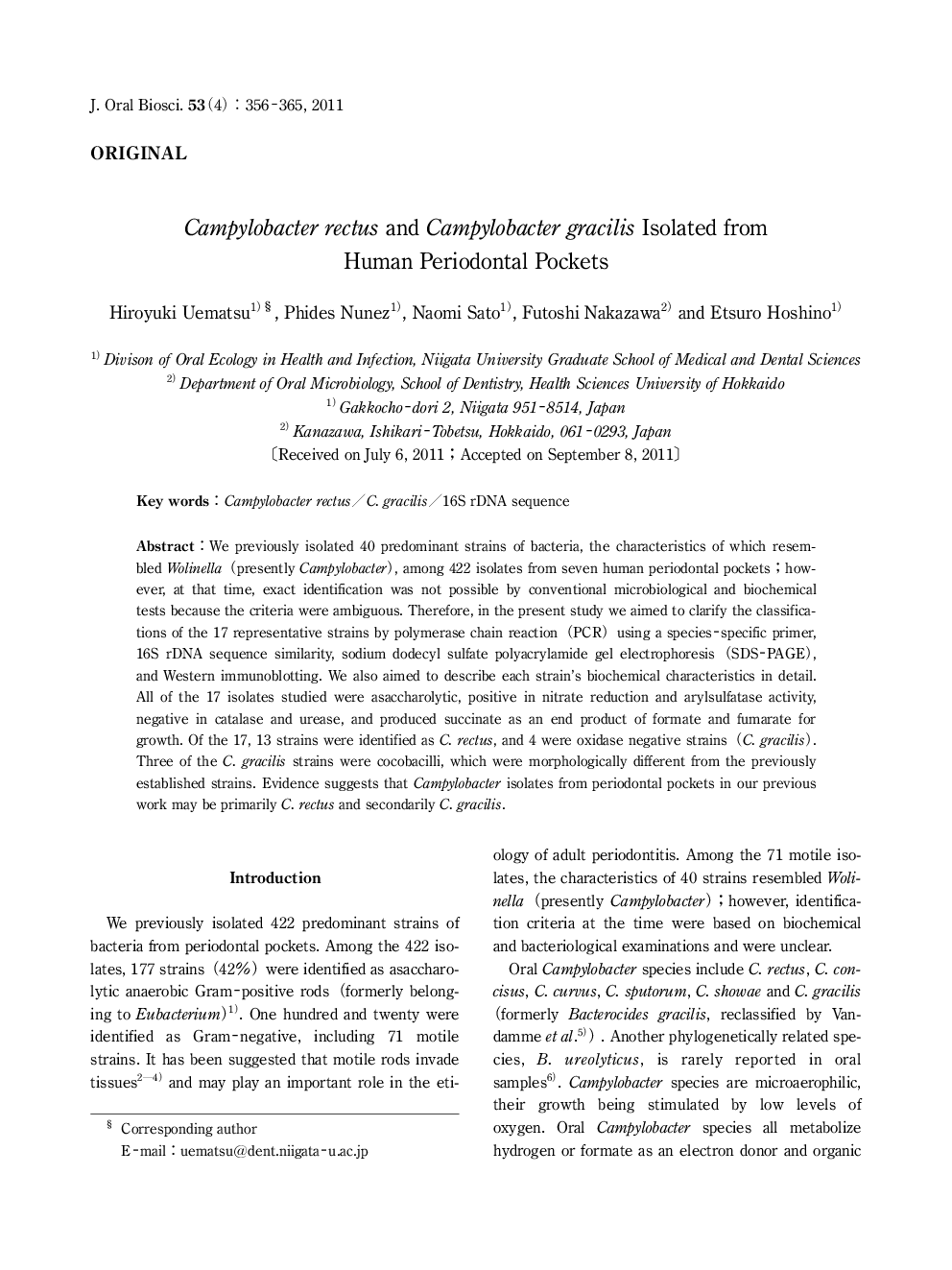| Article ID | Journal | Published Year | Pages | File Type |
|---|---|---|---|---|
| 2776954 | Journal of Oral Biosciences | 2011 | 10 Pages |
We previously isolated 40 predominant strains of bacteria, the characteristics of which resembled Wolinella (presently Campylobacter), among 422 isolates from seven human periodontal pockets; however, at that time, exact identification was not possible by conventional microbiological and biochemical tests because the criteria were ambiguous. Therefore, in the present study we aimed to clarify the classifications of the 17 representative strains by polymerase chain reaction (PCR) using a species-specific primer, 16S rDNA sequence similarity, sodium dodecyl sulfate polyacrylamide gel electrophoresis (SDS-PAGE), and Western immunoblotting. We also aimed to describe each strain's biochemical characteristics in detail. All of the 17 isolates studied were asaccharolytic, positive in nitrate reduction and arylsulfatase activity, negative in catalase and urease, and produced succinate as an end product of formate and fumarate for growth. Of the 17, 13 strains were identified as C. rectus, and 4 were oxidase negative strains (C. gracilis). Three of the C. gracilis strains were cocobacilli, which were morphologically different from the previously established strains. Evidence suggests that Campylobacter isolates from periodontal pockets in our previous work may be primarily C. rectus and secondarily C. gracilis.
